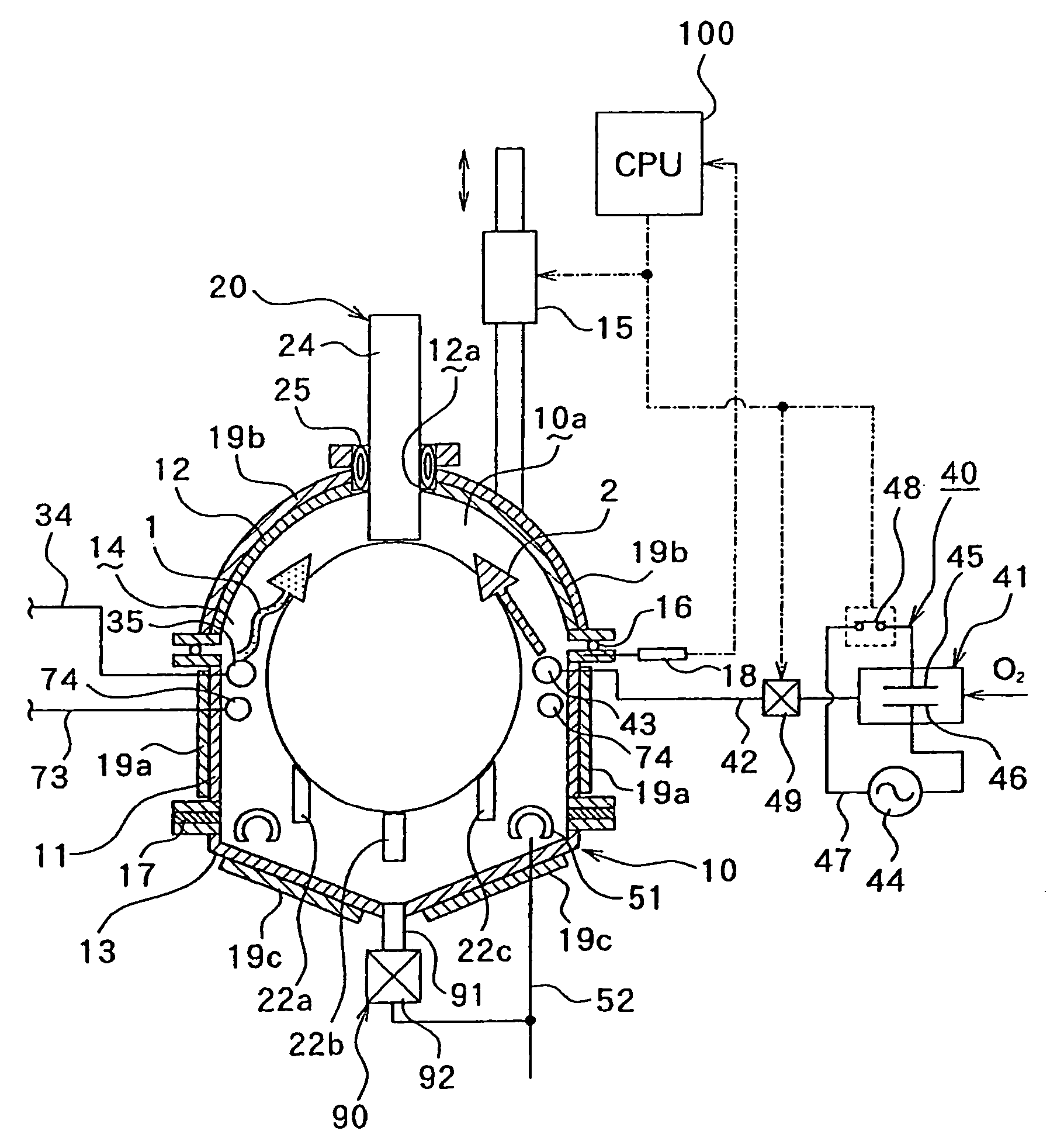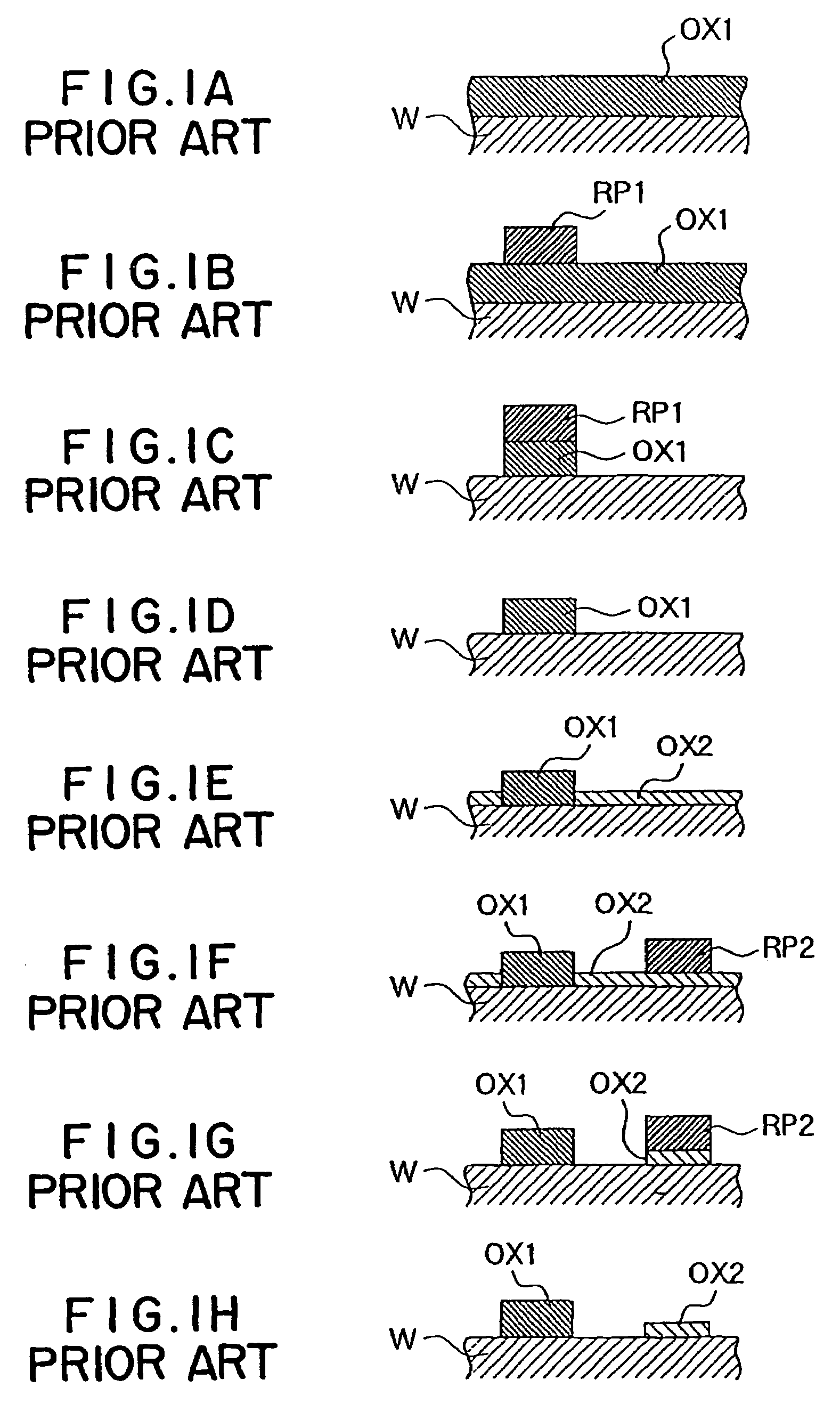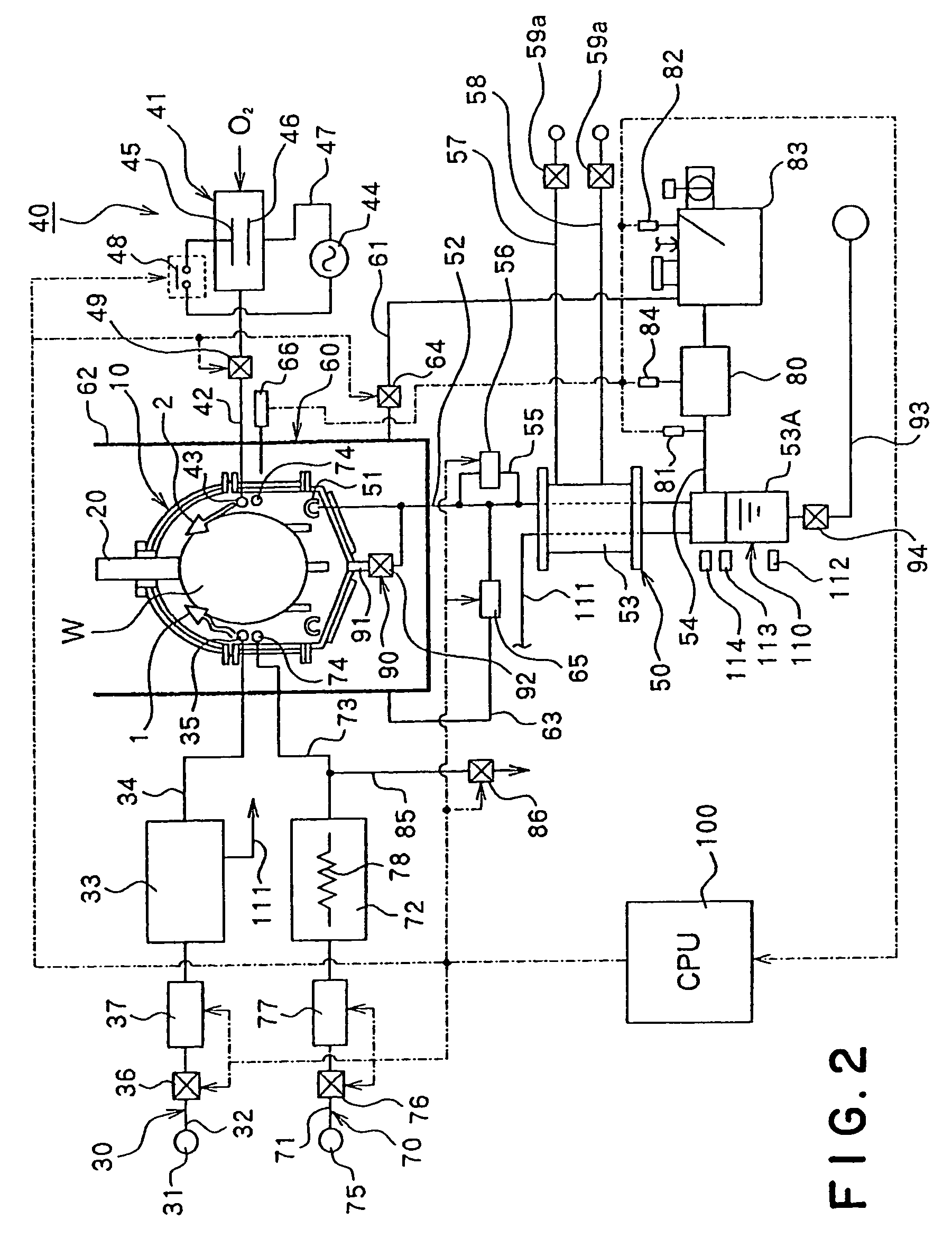Substrate processing method
a substrate processing and substrate technology, applied in the direction of photosensitive material processing, lighting and heating apparatus, cleaning using liquids, etc., can solve the problems of affecting the production efficiency of substrates, uneven thickness, and poor film quality, so as to facilitate the removal of resists, suppress the growth of chemical oxide films, and suppress metal contamination of wafers
- Summary
- Abstract
- Description
- Claims
- Application Information
AI Technical Summary
Benefits of technology
Problems solved by technology
Method used
Image
Examples
example 1
[0084]Experiments were made under the following conditions on etching rates of metals in the case where ozone gas contains nitrogen (N2) and in the case where ozone gas contains no nitrogen (N2).
[0085]Experiment Conditions:
[0086]A) Specimen metals: aluminum (Al), copper (Cu) and tungsten (W)
[0087]B) Processing conditions:
[0088]1) For the case where ozone gas contains nitrogen (N2):[0089]Pressure: 70.0[kPa][0090]Wafer temperature: 80[°C.][0091]Steam temperature: 115[°C.][0092]Processing period of time: 5 [min]
[0093]2) For the case where ozone gas contains no nitrogen (N2):[0094]Pressure: 70.0[kPa][0095]Wafer temperature: 80[°C.][0096]Steam temperature: 115[°C.][0097]Processing period of time: 5 [min]
[0098]The experiments were conducted under the above-described conditions, and the results of the experiments are as shown in FIG. 10.
[0099]The aluminum (Al) specimen had an etching rate of 86.38 [angstrom / min] in the case where ozone gas contained nitrogen (N2), and in the case where ozo...
example 2
[0101]Experiments were made under the following conditions on growth rates of chemical oxide films in cases of resist removal processing using ozone gas having different nitrogen addition amounts (contents).[0102]Ozone gas: 10 l / min (N2 added; No N2 added)[0103]Steam: 120° C.[0104]Wafer temperature: 90° C.[0105]Pressure: 0.05 MPa (Zero-adjusted atmospheric pressure (0.1 MPa))[0106]Ozone gas / steam feed period of time: 5 minutes[0107]N2 feed rate: 0.08 l / min
[0108]The experiments were made under the above-described conditions, and the results shown in TABLE 1 were obtained.
[0109]
TABLE 1Oxide filmOxide filmOxide filmthicknessthicknessgrowthbefore processedafter processedamountProcessed with3.3516.9013.55ozone gas with[angstrom][angstrom][angstrom]N2 addedprocessed with3.7011.237.54ozone gas with-[angstrom][angstrom][angstrom]out N2 added
[0110]According to the results of the above-described experiments, in the case where the resist removing processing was performed with ozone gas (O3 con...
PUM
| Property | Measurement | Unit |
|---|---|---|
| temperature | aaaaa | aaaaa |
| temperature | aaaaa | aaaaa |
| temperature | aaaaa | aaaaa |
Abstract
Description
Claims
Application Information
 Login to View More
Login to View More - R&D
- Intellectual Property
- Life Sciences
- Materials
- Tech Scout
- Unparalleled Data Quality
- Higher Quality Content
- 60% Fewer Hallucinations
Browse by: Latest US Patents, China's latest patents, Technical Efficacy Thesaurus, Application Domain, Technology Topic, Popular Technical Reports.
© 2025 PatSnap. All rights reserved.Legal|Privacy policy|Modern Slavery Act Transparency Statement|Sitemap|About US| Contact US: help@patsnap.com



